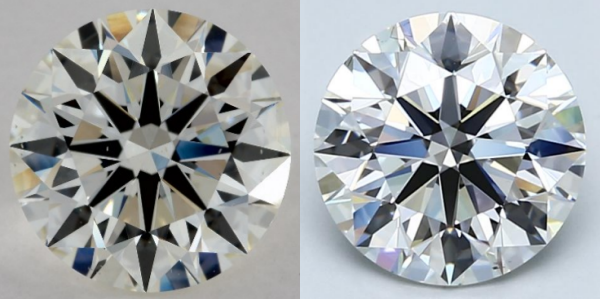
As the demand for ethical and sustainable alternatives to mined diamonds grows, man made diamonds are taking center stage in the jewelry market. These lab-grown stones are visually and chemically identical to natural diamonds, and like any valuable gemstone, they require professional certification to confirm their quality. Two major players in diamond grading—GIA and IGI—are often compared for their role in evaluating these gems. Understanding the debate between GIA vs IGI is essential for any buyer interested in man made diamonds.
What Are GIA and IGI?
The GIA vs IGI comparison begins with an understanding of what these organizations are and what they do. GIA, or the Gemological Institute of America, is considered the most authoritative and widely respected diamond grading lab globally. It created the 4Cs system (Cut, Color, Clarity, and Carat) and set the standards by which diamonds are evaluated today.
IGI, the International Gemological Institute, is another major grading body known for its accessibility and emphasis on modern market trends. While IGI may not carry the same long-standing prestige as GIA, it has become one of the most prominent graders of man made diamonds, especially in the retail sector. This makes it a popular choice for lab-grown diamond certifications.
How GIA and IGI Grade Man Made Diamonds
When it comes to man made diamonds, both GIA and IGI use similar grading criteria. However, their approach and the level of detail provided in their reports can differ. Historically, GIA was more conservative in grading lab-grown diamonds and only began issuing full reports for them in recent years. Today, GIA provides detailed information, but some believe it still takes a stricter stance when assigning grades.
IGI, on the other hand, has been grading man made diamonds for a longer time and was quicker to embrace them as a legitimate part of the diamond market. As a result, many jewelers offering lab-grown options prefer IGI certifications, both for their availability and for their reputation of being slightly more generous in certain grading aspects, such as clarity and color.
GIA vs IGI: Which Is More Trusted?
The GIA vs IGI debate often comes down to perception and intended use. GIA is universally recognized and trusted, especially in the world of natural diamonds. A GIA certificate often carries more weight in resale and insurance value, which may be important for those looking to invest in diamonds or pass them on as heirlooms.
That said, IGI is considered highly reliable for retail purposes, especially for man made diamonds. IGI reports tend to be more available and faster to produce, which can make a difference when shopping for a custom piece or working within a tight timeframe. For many buyers, especially those focused on appearance and ethics rather than long-term resale value, IGI offers a perfectly adequate and dependable assessment.
Pricing Differences Between GIA and IGI Certified Diamonds
One key aspect of the GIA vs IGI comparison is how certification affects pricing. Because GIA is perceived as stricter, diamonds certified by them—especially man made diamonds—may command slightly higher prices. This is partly due to the prestige of the GIA name and the trust it inspires in buyers.
IGI-certified diamonds, especially in the lab-grown sector, are often more accessible in terms of both availability and price. Jewelers can pass these savings on to the customer, which can be especially appealing for budget-conscious shoppers. While the quality of the diamond itself remains the same, the perceived difference in grading can influence the final cost.
Which Certification Should You Choose?
When choosing between GIA vs IGI for your man made diamonds, your decision should depend on your priorities. If you want the highest standard of certification for peace of mind or potential resale, GIA may be your best choice. On the other hand, if you’re more interested in immediate value, availability, and trust in lab-grown grading, IGI could be the better option.
Both grading labs offer comprehensive evaluations and are respected in the industry. The key is to work with a reputable jeweler who is transparent about the source and certification of their man made diamonds. Whether you opt for GIA or IGI, what matters most is finding a diamond that meets your expectations for quality, ethics, and beauty.
Conclusion
The GIA vs IGI comparison highlights two reputable paths to diamond certification, each with its strengths. As man made diamonds continue to reshape the jewelry industry, understanding the nuances between these grading institutions can help you make a confident and informed purchase. Whether you’re buying an engagement ring, earrings, or a meaningful gift, the right certification ensures your diamond is as genuine as your intentions.








